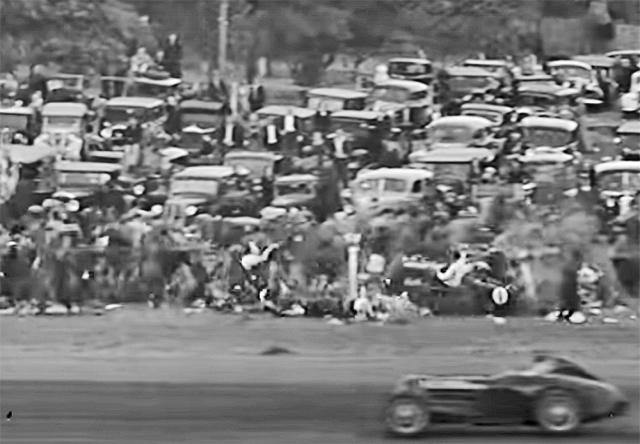Horrific and tragic are the only words to describe a devastating crash at Penrith Speedway in the late 1930s.
On Monday, June 13, 1938, families were enjoying a relaxing day out watching cars speed around the local racetrack, with no one anticipating the eventual tragedy that would soon follow.
A grandmother and her two grandchildren would not return home that day.
Maria Jones was spectating that fateful day with her three daughters, Elizabeth, seven, Clarice, 23, and Mary Baker, 27, and Baker’s two children, Walter, two, and Pamela, five months.
The family sat on the sideline to eat their lunch and watch a race that would have an unexpected and tragic conclusion.
The 10 mile (16km) championship race was for cars of various powers, with around seven racers hitting speeds of up to 70 miles per hour (over 110km per hour).
It was the final lap, and the lead car, driven by a 27-year-old male from Randwick, was trying to negotiate one of the worst bends in the track.
His car started to skid sideways, became uncontrollable and then hurtled over a ditch.
It then charged side-on to the spectators who were separated by only a wire fence on the inside of the track.
Jones, who was nursing her five-month-old granddaughter, Pamela, received full force of the impact when the car landed on top of them. Both the baby and Jones were killed on impact.
Surrounding spectators tried to jump clear, but many had no time to escape the speeding vehicle coming toward them.
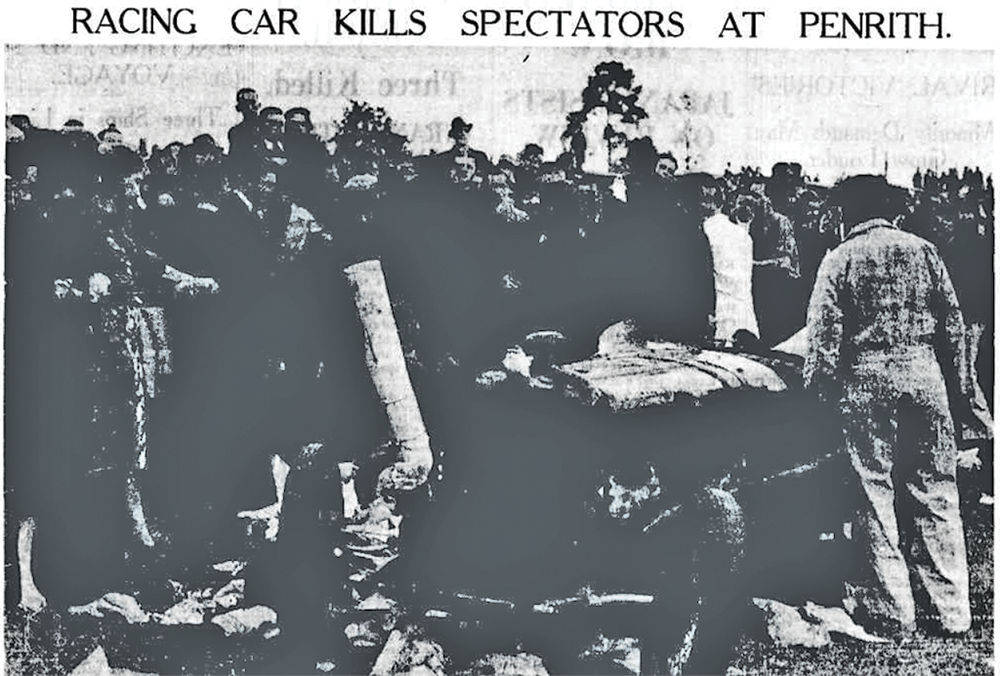
Video footage of the accident shows people being thrown on impact from the force of the car.
Jones’ second grandchild, two-year-old Walter, was also badly injured and died at the scene.
“As the car jumped into the crowd, men, women, and children seemed to be hurled into the air,” an ambulance officer said.
“One of the victims appeared to be thrown 10-feet, and the screams of the injured were hurled together with screams of spectators.”
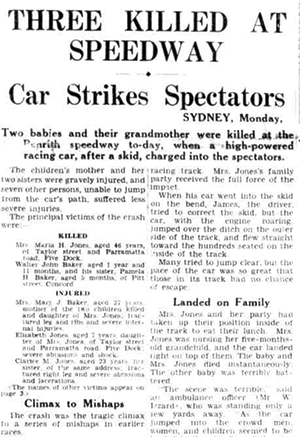
The car hit a post in the fence before it could plough through the crowd any further, potentially preventing the loss of more lives.
Jones’ three daughters, including the mother of the two deceased children, suffered severe injuries, but survived the tragic accident.
In a sad twist, the father of the two deceased infants witnessed the event, and only narrowly missed being struck.
Other spectators were admitted to Penrith Hospital after collapsing from severe shock, with 10 others physically injured.
Newspaper reports from the time made special mention of a local reverend, Father Peter Gallagher, who knelt by the bodies of the deceased and prayed for them and their families.
Incredibly, it wasn’t the only accident at the Speedway that day.
Reports said there was an accident earlier that morning, where a motorcycle racer fractured his skull during a practice ride.
There were two extreme accidents in the finals race that day, with the first incident occurring in just the second of 10 laps.
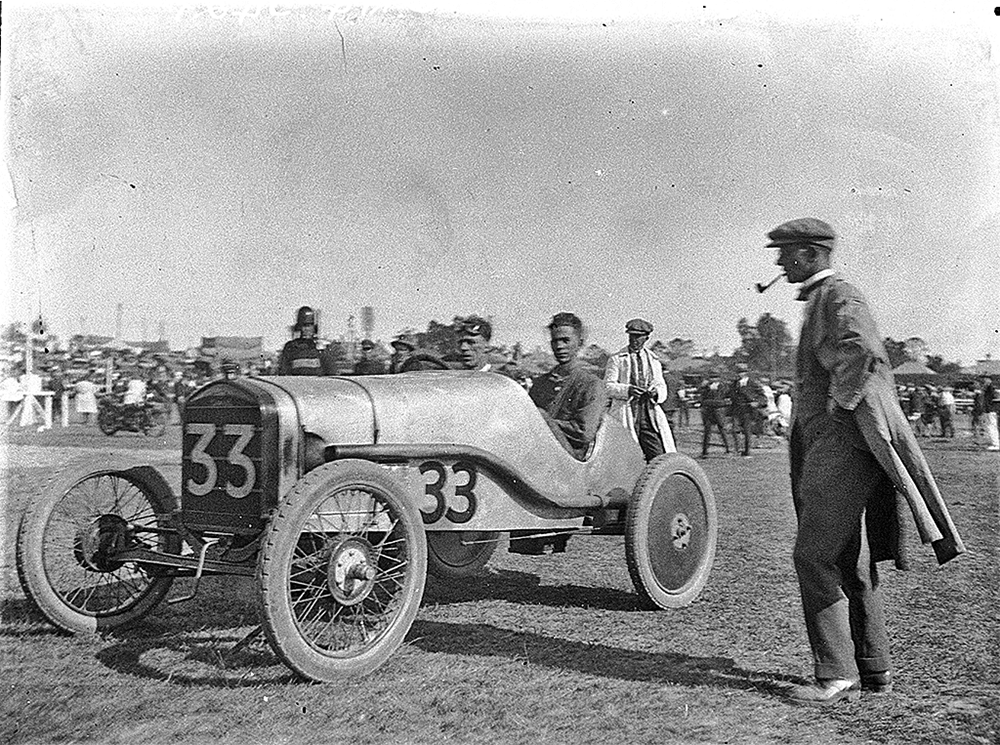
A car carrying both the driver and mechanic rolled over after skidding at a bend close to the railway line at the track, throwing the driver out and breaking his leg, and then somersaulting through the fence.
The mechanic was stuck in the car, and the ambulance officer rescuing him severely burnt his own arm.
While this rescue took place, and just eight laps later, the second car skidded into spectators.
Since opening in 1924, the one mile track was referred to as the ‘The World’s Greatest Dirt Track’ by international competitors.
The speedway had been operating for 14 years before this day of unfortunate events, with another fatal accident in 1925, killing one competitor.
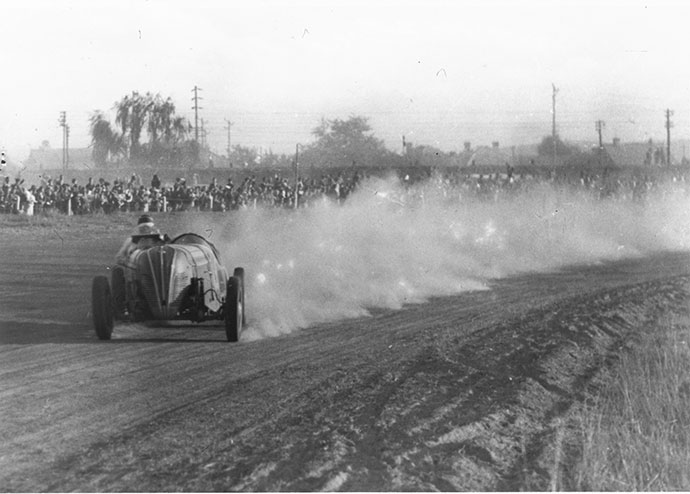
However, in 1941, just three years after this tragic day, it was compulsorily acquired by the Commonwealth Defence Department.
The speedway closed forever in May 1941.
Today, the Thornton development sits where the Speedway once thrived and where the lives of Maria Jones and little Walter and Pamela came to an end.

Weekender Newsroom
This post has been published by the team in our newsroom.

